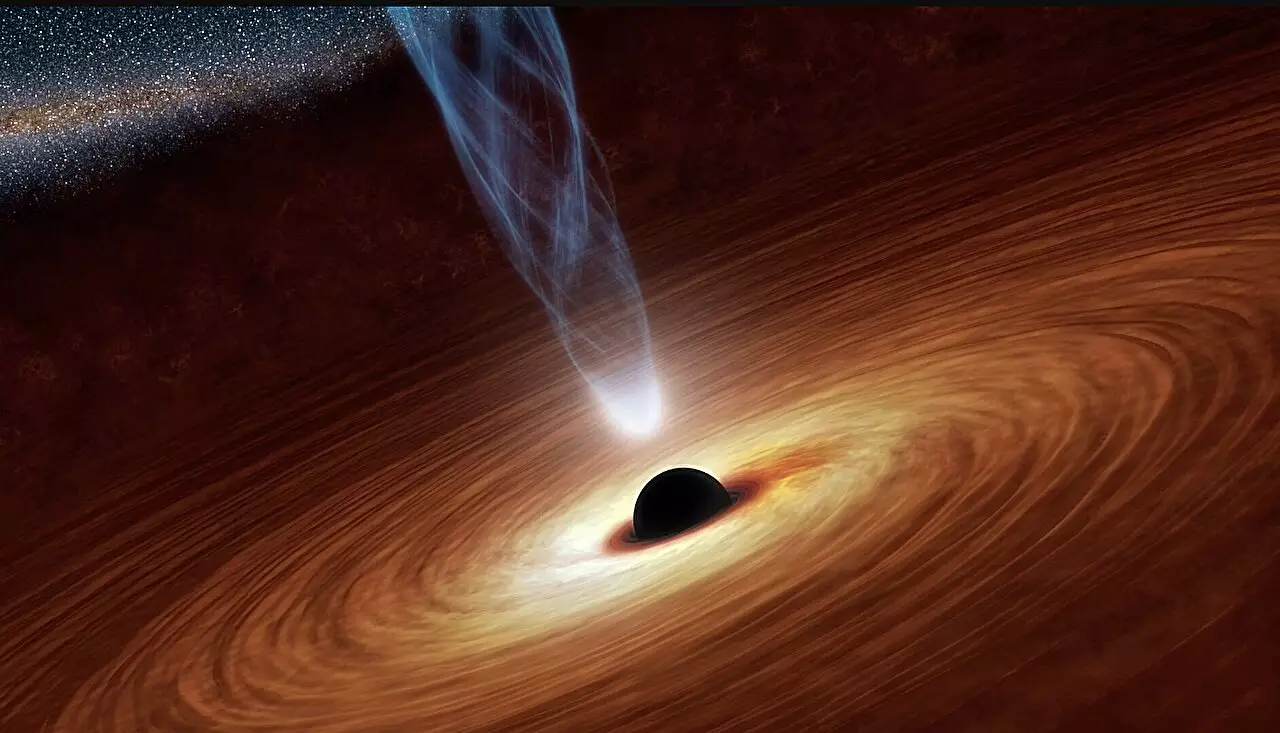Black holes are captivating cosmic entities that possess an incredibly strong gravitational force, which prevents any matter or electromagnetic waves from escaping. Extremal Kerr black holes are a specific class of black holes that are uncharged, stationary, and have the remarkable characteristic of having coinciding inner and outer horizons. While extensive research studies have been conducted on black holes, the intricate physical properties of extremal Kerr black holes are still not fully understood. However, a recent theoretical study carried out by researchers at the University of California–Santa Barbara, University of Warsaw, and University of Cambridge suggests that these unique black holes could potentially serve as “amplifiers” for new, unknown physics.
The research conducted by Maciej Kolanowski, Gary Horowitz, and Jorge Santos was initially inspired by a previous project undertaken during Kolanowski’s visit to UC Santa Barbara. This study aimed to explore the properties of extremal black holes in the presence of a cosmological constant. The team discovered that these black holes experienced infinite tidal forces, meaning that any living beings falling into them would be crushed by gravity long before reaching the center. However, they also found that if the cosmological constant is zero, which is commonly assumed in many astrophysical scenarios, this effect disappears. This initial discovery served as the foundation for their subsequent research.
During a discussion with Gary Horowitz following a talk on his research on black hole horizon singularities, Grant Remmen posed a question about whether other effects could give rise to similar phenomena. Remmen’s background in effective field theories (EFTs) and physics models with quantum corrections gave him an idea. He wondered whether the higher-derivative terms in a gravitational EFT, which refer to quantum corrections to the Einstein equations, could lead to singularities on the horizons of extremal black holes. Intrigued by this idea, Horowitz teamed up with Remmen and Kolanowski, along with Santos, to test this hypothesis through a series of calculations.
In their calculations, the researchers explored the effects of Einstein gravity coupled with its leading quantum corrections. The Einstein equations, which describe the curvature of spacetime, are linear in the Riemann tensor. However, in three space dimensions, the leading corrections to Einstein are cubic and quartic terms in the curvature, also known as higher-derivative terms. These terms represent the derivatives of the spacetime geometry and are referred to as higher-derivative terms. By taking these higher-derivative corrections into account, the researchers demonstrated that the horizons of extremal black holes become singular, exhibiting infinite tidal forces. This finding was in stark contrast to regular black holes, where tidal forces become infinite only at the center.
Surprisingly, the researchers discovered that the singularities on the horizons of extremal black holes, resulting from the EFT corrections, extended all the way from the center to the horizon. This unexpected phenomenon highlights the sensitivity of the spacetime geometry near the horizons to new physics at higher energies. The coefficients of the EFT terms, which determine the “dial settings” in the laws of physics, are influenced by the couplings and types of particles present at high energies and short distances. Consequently, these coefficients play a crucial role in revealing the existence of new physics.
Kolanowski, Horowitz, Remmen, and Santos also discovered that the strength of tidal divergence at the horizons of extremal black holes, as well as the possible occurrence of tidal singularity, highly depend on the EFT coefficients. Remarkably, their calculations revealed that these unexpected singularities are present for the values of the EFT coefficients generated by the Standard Model of particle physics. This outcome suggests that the low-energy description of physics can break down precisely in situations where it is least expected. In physics, there is typically a sense of “decoupling” between different distance scales. However, for rapidly spinning black holes, the low-energy EFT breaks down at the horizon, violating this notion of decoupling.
The calculations conducted by this group of researchers indicate the considerable potential of extremal Kerr black holes as instruments to probe new physical phenomena. While the horizons of these black holes can be excessively large, it was not anticipated that they would possess infinite curvature or tidal forces within the EFT framework. However, the results obtained from their study demonstrated the appearance of these unexpected characteristics. Moreover, their research raises intriguing questions regarding whether these singularities can be resolved by ultraviolet physics and whether the sensitivity of the horizons to new physics extends all the way to the Planck scale. Further investigation is required to uncover the full extent of extremal Kerr black holes’ contribution to the understanding of the fundamental laws of physics.



Leave a Reply